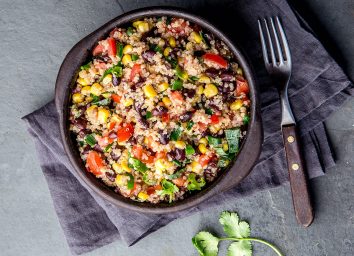Secret Side Effects of Eating Quinoa, Says Science
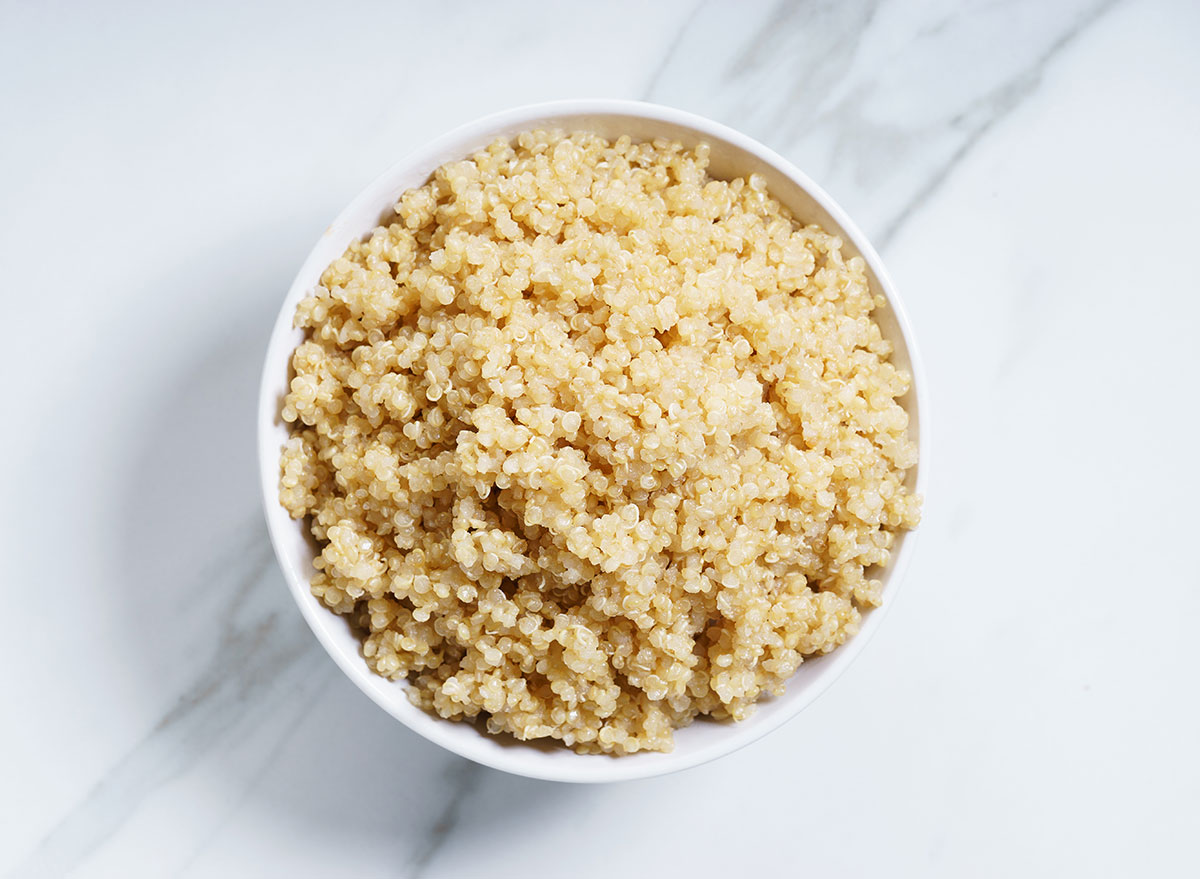
Quinoa is one of the most nutritious foods out there, packing all nine essential amino acids, making it a complete protein. Still, as is the case with any food out there, you may experience some discomfort from a few side effects after eating quinoa, and that’s completely normal. There are a few reasons why some people may have GI distress after eating their go-to quinoa recipe.
Below, we outline just four possible side effects you could run into after eating quinoa. Then, don’t miss these 8 Healthy, Low-Carb Grains For Low-Carb Dieters.
You could have an allergy.
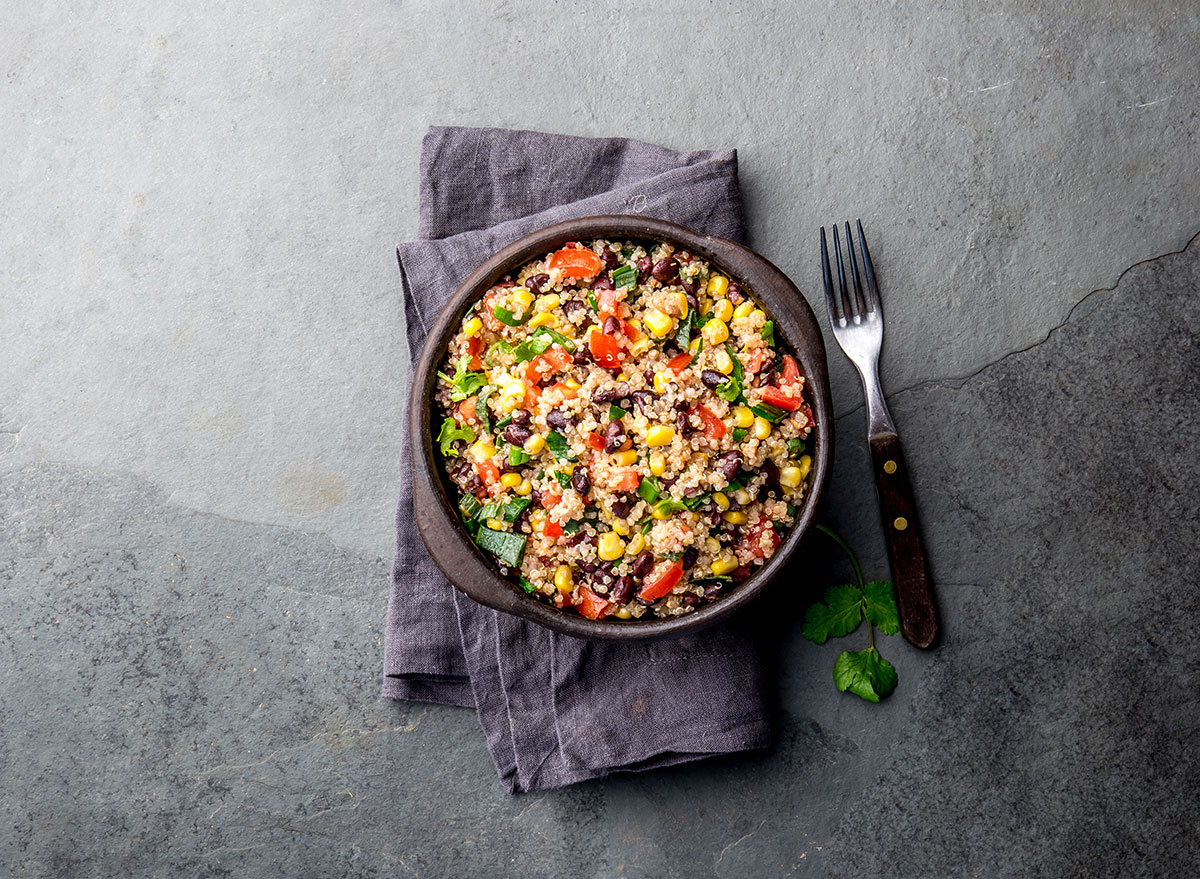
An intolerance to quinoa is a very real thing, as is an allergy! If you have either, you may experience inflammation in the skin, lungs, and digestive tract which could entail diarrhea, stomach pain, nausea, eczema, hives, and itchiness. A severe allergic reaction to quinoa may entail elevated heart rate, pale skin, low blood pressure, and the inability to breathe, just to name a few.
If you’ve eaten quinoa before and never had issues, but are starting to notice one of the symptoms above, it’s possible that you’ve developed an allergy to saponin—a chemical found in quinoa’s coating. Saponin helps to protect the quinoa plant from pests and fungus, however, it’s also known to cause irritation in some people. Try soaking quinoa in water for 30 minutes and then rinse it before cooking to rid of this chemical.
Check out What’s the Difference Between a Food Allergy, a Sensitivity, and an Intolerance?
You may feel bloated or have gas.
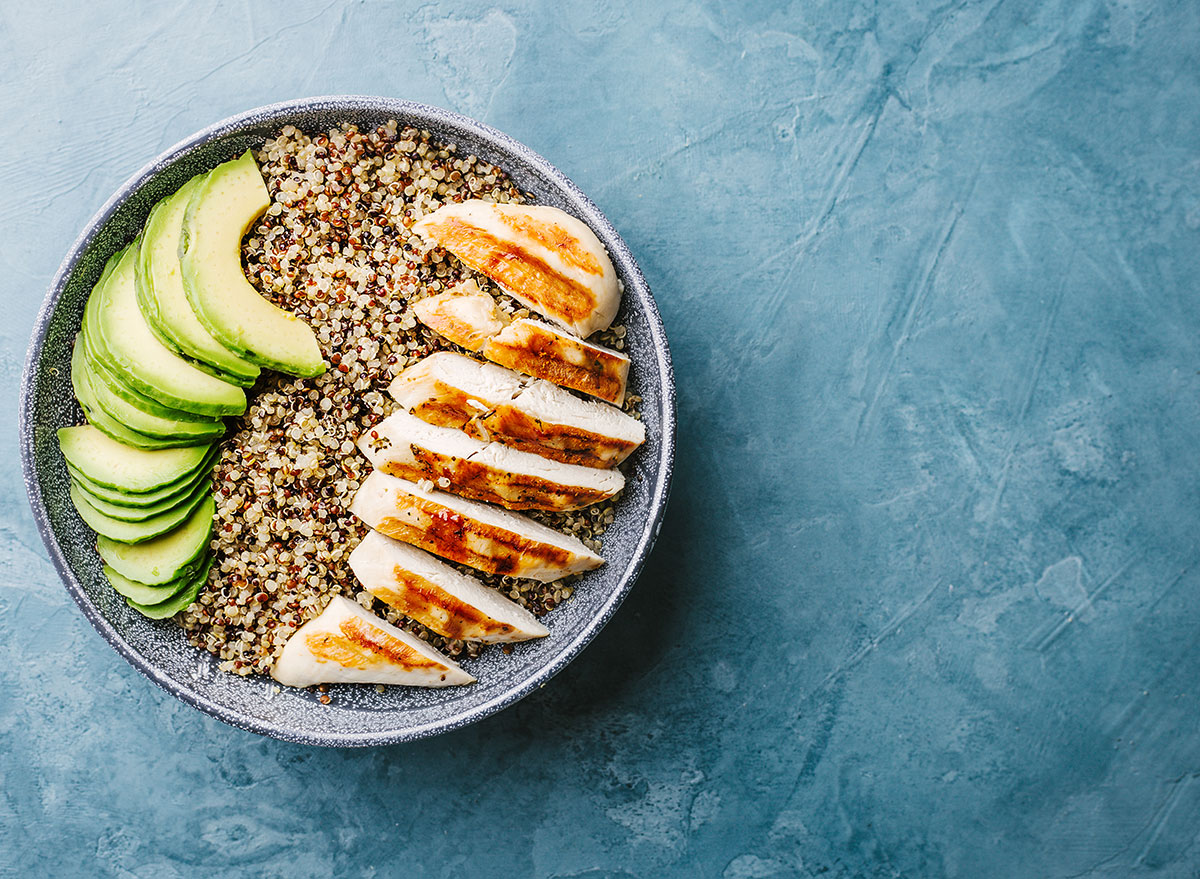
Did you know that quinoa is very high in fiber? In fact, one cup of cooked quinoa packs over 5 grams of fiber. For context, the USDA’s current dietary guidelines say that adult women need 22 to 28 grams of fiber daily, whereas men need between 28 to 34 grams each day. However, too much fiber can leave you feeling bloated, as fiber is an indigestible carbohydrate. If you’re not used to eating quinoa—or any other high-fiber food—and you have a large serving in one sitting, you may find your feeling bloated or having gas build-up.
Now, be sure to read One Major Effect of Eating Fiber-Rich Foods, Says Expert to learn about a new health benefit associated with high-fiber foods like whole grains.
It could cause a Chron’s disease flare-up.
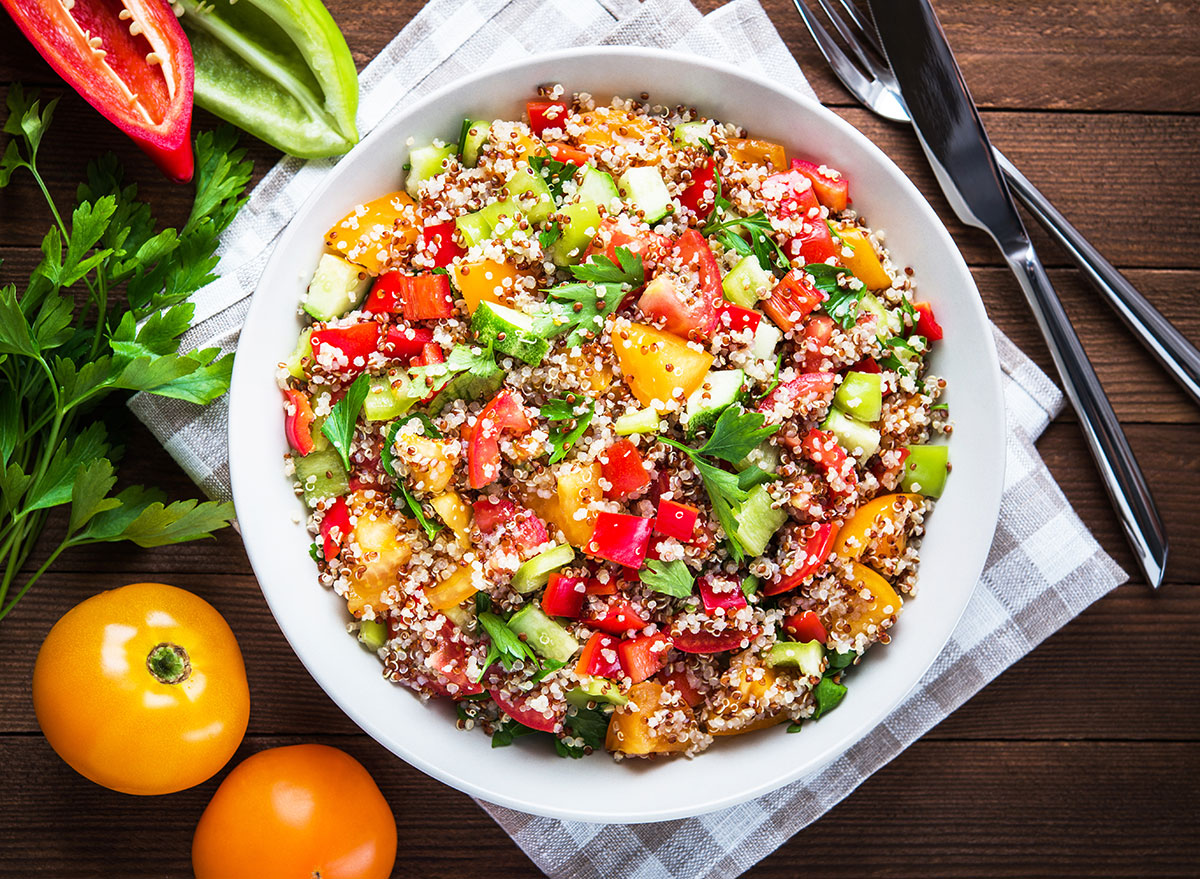
People with Chron’s disease may need to avoid certain foods as they trigger flare-ups, which may lead to diarrhea, nausea, and stomach cramping. These include high-fiber foods including types of bread and starches like whole grains, brown rice, and quinoa. If you have Chron’s disease, you may want to steer clear of quinoa entirely to avoid a digestive upset!
It could increase your risk of kidney stones.
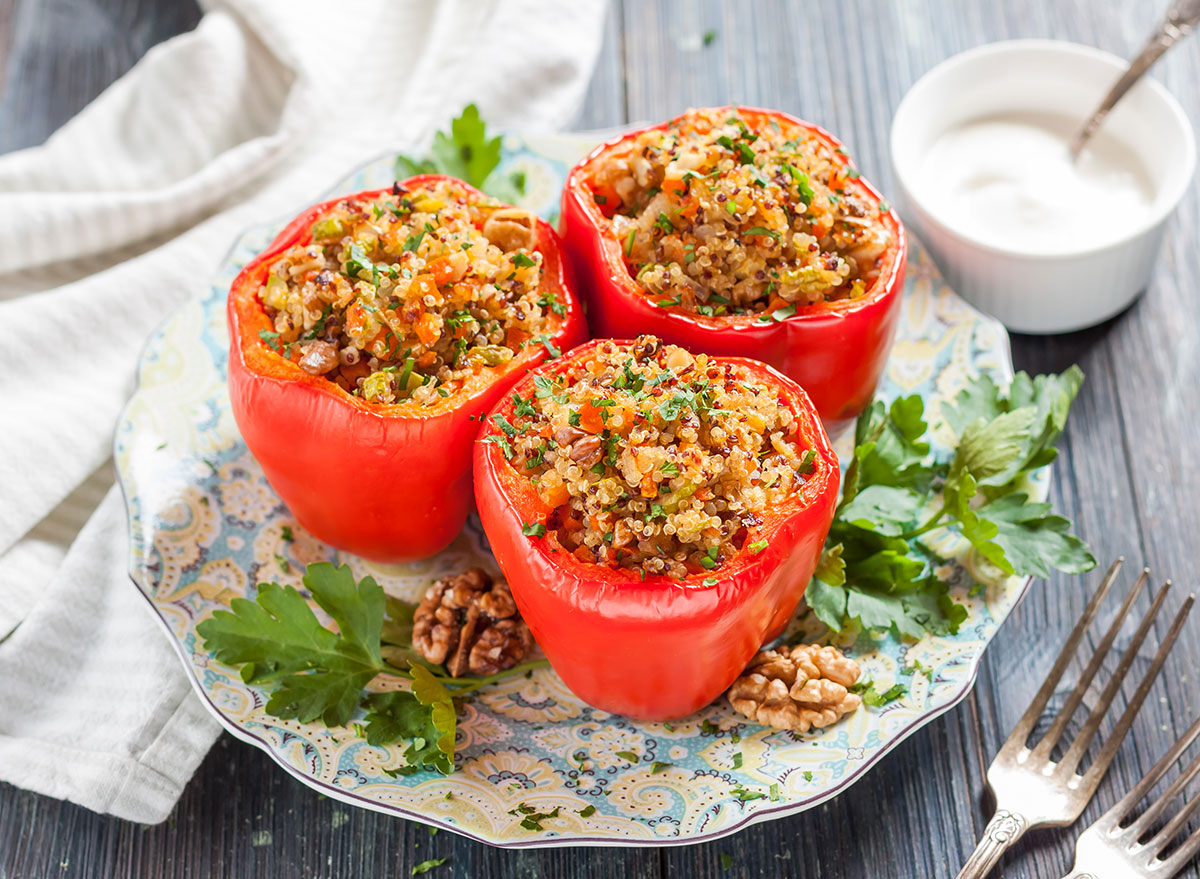
Someone who is susceptible to kidney stones may need to limit their consumption of various plant-based foods, including quinoa, that contain a substance called oxalate or oxalic acid. The good news is that your body naturally excretes the substance through urine, however, those who are prone to kidney stones or have kidney disease may need to monitor their intake of quinoa, leafy greens, and certain legumes. This is because the substance binds to calcium as it’s exiting the body, increasing the risk of a kidney stone.
For more, be sure to check out:

